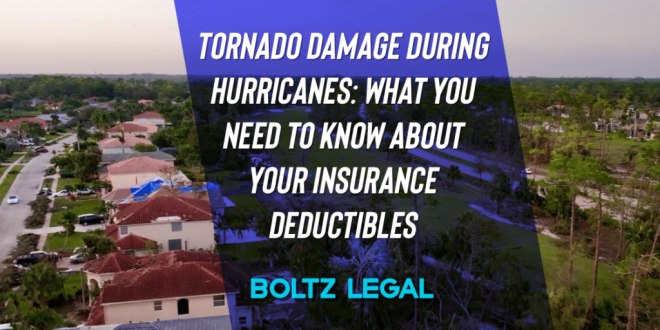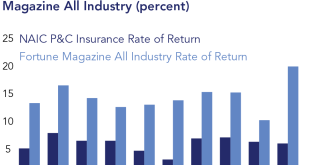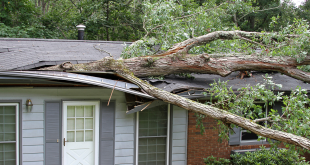Hurricane season can be a truly nail-biting time for homeowners. It’s not just about the immediate worries of staying safe, but also figuring out how to protect your biggest investment: your home. Sorting through your home insurance coverage might seem like a headache, but honestly, understanding the basics can really save you from a lot of stress down the road. So, let’s break down what you need to know about hurricane season and how your insurance can be your safety net. Trust me, knowing this stuff is worth it.
Understanding Hurricane Season
When is Hurricane Season?
Alright, so when are we actually talking about? Officially, hurricane season in the Atlantic runs from June 1st to November 30th. Yeah, a pretty big chunk of the year, right? But don’t let that freak you out too much. Peak activity usually happens between mid-August and late October. That’s when conditions are most ripe for these storms to brew. So, that’s your key timeframe to really be on alert.
Where are Hurricanes Most Likely to Occur?
Think of the Atlantic and Gulf Coasts of the United States, plus the Caribbean Islands. These areas are basically in the hurricane highway. Florida, Texas, Louisiana, the Carolinas…they all see their fair share. But honestly, a hurricane can technically make landfall anywhere along the eastern seaboard. I remember one year, we even had a close call way up in New England! It’s all about warm ocean waters and the right atmospheric conditions. Spooky stuff.
Predicting Hurricane Activity
These days, we’ve got some pretty sophisticated ways to predict what a hurricane season might look like. Organizations like NOAA (National Oceanic and Atmospheric Administration) put out seasonal forecasts. They look at things like sea surface temperatures, wind patterns, and other climate factors to estimate how many named storms, hurricanes, and major hurricanes we can expect. Keep an eye on these forecasts. They’re not perfect, but they give you a heads-up so you can prepare. Forewarned is forearmed, right?
Home Insurance Basics: What’s Covered?
Dwelling Coverage
This is the big one. Dwelling coverage is what protects the actual structure of your house. Think walls, roof, foundation – the stuff that makes your house a house. If a hurricane blows your roof off, or a tree crashes through your living room (yikes!), this is the part of your insurance that kicks in to help pay for repairs. Make sure you have enough coverage to rebuild your home if the worst happens. You don’t want to be caught short.
Personal Property Coverage
Okay, so your house is covered, but what about all your stuff inside? That’s where personal property coverage comes in. This covers your furniture, clothes, electronics, appliances… basically, everything you own that isn’t nailed down. There are limits, though, so take a look at your policy to see if you need extra coverage for particularly valuable items like jewelry or collectibles. I learned that the hard way after a small fire years ago – lesson definitely learned!
Additional Living Expenses (ALE)
If a hurricane makes your home uninhabitable, ALE coverage can help pay for things like hotel stays, restaurant meals, and other extra costs you incur while you’re displaced. It’s basically there to keep you from going broke while you’re waiting for your house to be repaired. Check the limits on this coverage too, because they can vary quite a bit. You’ll probably want to know that in advance, right?
Deductibles: Hurricane vs. Standard
Here’s a tricky bit: deductibles. Most home insurance policies have a standard deductible, which is the amount you pay out-of-pocket before your insurance kicks in. But in hurricane-prone areas, many policies also have a separate, often higher, deductible specifically for hurricane damage. This can be a percentage of your dwelling coverage, so it could be significantly more than your standard deductible. Make sure you understand how your hurricane deductible works before a storm hits. It can seriously impact how much you pay if you have to file a claim.
Common Hurricane-Related Damage and Insurance Coverage
Wind Damage
Wind is a hurricane’s biggest weapon, right? It can rip shingles off roofs, shatter windows, and even topple entire structures. Home insurance generally covers wind damage, but there are often specific requirements for things like wind mitigation (hurricane shutters, reinforced roofs, etc.). If you’ve taken steps to protect your home from wind, make sure your insurance company knows about it – you might even get a discount. Every little bit helps!
Water Damage: Flooding vs. Rain
Water damage is where things get complicated. If rainwater enters your home because of wind damage (like a hole in the roof), that’s generally covered by your home insurance. But if the water comes from flooding – like a storm surge or overflowing river – that’s a whole different ballgame. Standard home insurance policies typically don’t cover flood damage. You need a separate flood insurance policy for that.
Damage from Falling Trees
Okay, so a tree falls on your house during a hurricane. Is it covered? Generally, yes! If the tree falls due to the storm’s wind and damages your home or other insured structures (like a detached garage), your home insurance should cover the cost of removing the tree and repairing the damage. However, if the tree simply falls over on its own, without a storm, it might not be covered. That’s worth checking with your insurer about.
What’s NOT Covered by Standard Home Insurance?
Flood Damage (Requires Separate Flood Insurance)
Seriously, I can’t stress this enough: standard home insurance usually does NOT cover flood damage. If you live in an area prone to flooding, even if it’s not right on the coast, you absolutely need to consider flood insurance. It’s usually offered through the National Flood Insurance Program (NFIP) or private insurers. Don’t wait until it’s too late!
Earth Movement (Landslides, Mudslides)
Hurricanes can bring a lot of rain, which can lead to landslides or mudslides, especially in hilly or mountainous areas. Unfortunately, damage caused by earth movement isn’t typically covered by home insurance. There might be separate policies available for this type of damage, but they’re not common.
Neglect and Lack of Maintenance
Insurance is there to protect you from unexpected events, not from problems caused by neglecting your home. If your roof is already falling apart and a hurricane makes it worse, your insurance company might deny your claim. Keep your home in good repair, and document any maintenance you do. It’s just good practice, and it can save you headaches later.
Preparing Your Home and Insurance Policy Before a Hurricane
Review Your Insurance Policy
Seriously, take the time to read through your policy. I know, it’s boring, but it’s crucial. Understand what’s covered, what’s not, what your deductibles are, and what your policy limits are. If you have questions, call your insurance agent and ask them to explain it to you. That’s what they’re there for!
Create a Home Inventory
Walk through your house and take pictures or videos of everything you own. Keep a detailed list of your belongings, including purchase dates and estimated values. This will make the claims process much easier if you ever have to file one. Store your inventory in a safe place, like a cloud drive or a safe deposit box.
Take Precautionary Measures to Protect Your Home
Before a hurricane threatens, take steps to protect your home. Install hurricane shutters or board up windows. Trim trees and shrubs. Secure loose objects in your yard. These measures can minimize damage and potentially save you money on your insurance deductible.
Filing a Hurricane Insurance Claim
Document the Damage Thoroughly
As soon as it’s safe to do so, start documenting the damage to your home. Take photos and videos of everything, inside and out. Don’t throw anything away until your insurance adjuster has seen it. The more documentation you have, the smoother the claims process will be.
Contact Your Insurance Company Promptly
Call your insurance company as soon as possible to report the damage and file a claim. The sooner you file, the sooner the claims process can begin. Be prepared to provide your policy number, a description of the damage, and your contact information.
Understand the Claims Process
Your insurance company will assign an adjuster to your case. The adjuster will inspect the damage, assess the cost of repairs, and determine how much your insurance company will pay. Don’t be afraid to ask questions and get clarification on anything you don’t understand. It’s their job to assist you. You need to be informed and feel comfortable with the assessment. You know?
Tips for Navigating the Insurance Claim Process After a Hurricane
Keep Detailed Records
Keep a record of all communication with your insurance company, including dates, times, and names of people you spoke with. Save copies of all documents related to your claim, such as repair estimates, receipts, and correspondence with the adjuster.
Be Persistent and Patient
The insurance claim process can take time, especially after a major hurricane when insurance companies are dealing with a high volume of claims. Be persistent in following up with your insurance company and don’t be afraid to ask for updates. But also, be patient. These things take time.
Consider Consulting with a Public Adjuster
If you’re having trouble getting your insurance company to pay a fair amount, or if you’re overwhelmed by the claims process, you might consider hiring a public adjuster. A public adjuster is an independent professional who can represent you in your claim and negotiate with your insurance company on your behalf. They typically charge a percentage of your claim settlement, so weigh the costs and benefits carefully. But they can really fight for you.
So, there you have it – a hopefully not-too-scary overview of hurricane season and home insurance. It’s a lot to take in, I know, but understanding your coverage and preparing your home can really make a difference. Do yourself a favor and take some time to review your policy, create a home inventory, and take steps to protect your property. It’s an investment in your peace of mind. And hey, stay safe out there!
 seeme
seeme




